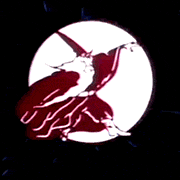|
Dressing propeller blades is a normal maintenance procedure -- it's about removing sharp nicks that could turn into cracks -- but lol @ having to do it after every flight.
|
|
|
|

|
| # ? May 1, 2024 18:44 |
|
Barely a metalworking question, but thought it'd be the best place to ask: I'm looking into cutting my own aluminium tropy engraving plates for doing tintypes, it's this product. What would be my cheapest option for getting consistent, straight cuts? I've seen "a metal jump shear" (AU$190 new is the cheapest I've seen one), or a drop/mitre saw with a metal cutting blade. The longest cut I'd be doing is about 25cm/10", the material is quite thin, probably half a mm or so.
|
|
|
|
Yooper posted:Hi dude. Meeting with my contractor tomorrow to figure out how we are getting the machines into the building. Flat land is a scarce resource in these parts, which means everything is on a slope. Large hole in the wall, columns and deck strong enough for the crane to Machine wise, hesitant to post specifics until the i's are dotted. Old japanese VMC, relatively new flat bed cnc lathe, old 3 axis surface grinder. Buying machines sight unseen half way round the world is always gonna be a shitshow, time to spin the wheel! Also gotta mention in the last year or so, obtained a 1 kw fibre laser source, brand new for 1/10th retail. Fixed laser cutting head, and a handheld welding/cutting head. And a laser chiller. 2 Staubli 6 axis industrial robot arms, single lab owner, less than the cost of the rack the controllers came with! Oh, and an english wheel and a planishing hammer.
|
|
|
|
Sorry for the double post, and quote necroAmbrose Burnside posted:i'm just learning about incremental sheet forming and god drat it why wasnt i told that "chasing/repousse/raising: CNC edition" is a thing that exists That's what the robots will be doing part of the time; also take a look at laser assisted incremental forming. I'm sure you'll like this too, English wheel: CNC edition https://www.researchgate.net/public...e_English_Wheel https://news.psu.edu/story/503531/2018/02/01/research/english-wheels-and-robots
|
|
|
Ethics_Gradient posted:Barely a metalworking question, but thought it'd be the best place to ask: A small shear will make great cuts, we have a very large one and it's surprisingly accurate. Just watch your fingers! We had a machine operator who lost an arm to one in a local shipyard (not our shop). fins posted:Primary purpose is to bring an invention to fruition. Secondary, anything to keep the lights on! As I posted in another thread, there are around 6 or 7 lathes and mills in the country in use. One CNC machine that I know of, a Tormach PCNC 1100 (series 3 iirc). Leaves a lot of possibilities open. Marine and automotive are the largest demand. We use a port-a-power for machine levelling, just have a ton of stock available to sloooowly stack it all up. I've not used skates, our machines are a bit big for that. Looking forward to seeing some shop photos!
|
|
|
|
I did it! I made an actual thing. The welds are heinous but nothing a grinder can't fix. Roughly 24" tall and 10" wide. Of course I had to start complicated, so I wanted it round. The harbor freight ring roller I asked about recently is not great but it�s good enough for me! This is the band that will hold the wooden surface in place.  The surface structure complete. I made a wood plate that fits in nice and snug. I ground the welds down on this so the wood surface would sit flat on the metal braces.  A round ring that will go toward the bottom of the legs for stability and strength. Also made on the roller. Said roller was less capable at making a loop instead of a spiral with this, it liked to twist as it went. Noted for future cool spiral art though.  Getting things in place to start sticking the legs on. Use the lower ring here to get the diameter and placement just right, and the magnets to hold it in place while I tack it together.  How do I weld my pants on? Just like everyone else: one leg at a time.  Used this super highly flame resistant strap to hold things in place while I tack the lower ring in real quick.  All stuck together! Like I said, my welds may not be pretty, but they still work. Grinding and paint, as they say.  Cut the legs off to get it to the right height.  Drop the cookie in...  And celebrate. Pending: some sort of finish on the surface, and cleaning up and possibly painting the metal. I�m thinking I might torch the wood, I think it�ll work well on this one. For the metal, I�m undecided. Paint, or I think there are some chemical treatments to give it that rust patina, and then topcoat that? I dunno, we�ll see, definitely winging it here. 
|
|
|
|
|
I love it! Is there anything holding the wood in place, or just gravity?
|
|
|
|
That looks awesome! You definitely want to thoroughly wire brush the soot / gunk off of those welds before you apply a surface finish. Then, I would hit each surface you plan on painting / passivating with red Scotchbrite- you basically just want to remove as much residual oil / scale on the metal and create as clean and consistent of a surface as possible. Bluing is a pretty cool way to passivate / finish steel and you don't need any special gear for it. Just a little bit of patience and good Wiping Skills. https://en.wikipedia.org/wiki/Bluing_(steel) Here are some ideas for finishing those little feets- little bits like this are often what distinguish a pile of metal glued together from a professional, manufactured product. https://www.mcmaster.com/tube-inserts/heavy-duty-square-caps/ https://www.mcmaster.com/leveling-feet/ mkvltra fucked around with this message at 21:43 on Sep 1, 2021 |
|
|
|
Bad Munki posted:Harbor Freight ring roller rolls rings just fine for my needs, thanks. Oh man, I didn't even know that was a thing
|
|
|
|
Flat pack rocket stove for glamping I designed and had cut out on a waterjet, 0.25" stainless. 
|
|
|
Uncle Enzo posted:I love it! Is there anything holding the wood in place, or just gravity? There�ll be a screw or two up through the bottom, just to keep it secure. It�s comfortably snug as-is, but it�ll be locked in. mkvltra posted:That looks awesome! Much appreciated info! I definitely cleaned it up really well, got it scoured to a dull even sheen and then wiped it down with mineral spirits a few times. I thought more about the finish and while I like the options you mentioned (and will be doing them in the future) I realized this was intended to go next to some boring black stuff, so I just stuck with that. Helps hide the flaws, too. 🤣 Plus, the stand being less attention-getting will let the scorched top really pop out. Well, the soon-to-be-scorched top. Now if I could just find my roofing torch�
|
|
|
|
|
Just finished a big part out of D2 on the lathe to discover some of our diameters were oddly out of spec. So we re-taught the tools, and found more oddness. One tool would cut spot on, a 2nd tool was out 0.020". Out came the indicator and we verified all motion, turret action, and tool pre-setter position. The one variable seemed to be any time you folded down the tool pre-setter it would change the location. We tore down the tool pre-setter, discovered that Haas wants you to remove the outer shell of the machine (not happening) in order to fully remove it. Eventually we get it disassembled and discover that they just used compressed open cell foam instead of a proper gasket to seal the pre-setter. So coolant has been seeping into the bearing housing and the whole works was filled with rust, gunk, and nastiness. Bearing is shot. Tomorrow will be spent trying to disassemble and rebuild the works.
|
|
|
|
|
Yooper posted:Just finished a big part out of D2 on the lathe to discover some of our diameters were oddly out of spec. So we re-taught the tools, and found more oddness. One tool would cut spot on, a 2nd tool was out 0.020". Out came the indicator and we verified all motion, turret action, and tool pre-setter position. The one variable seemed to be any time you folded down the tool pre-setter it would change the location. We tore down the tool pre-setter, discovered that Haas wants you to remove the outer shell of the machine (not happening) in order to fully remove it. Eventually we get it disassembled and discover that they just used compressed open cell foam instead of a proper gasket to seal the pre-setter. So coolant has been seeping into the bearing housing and the whole works was filled with rust, gunk, and nastiness. Bearing is shot. Tomorrow will be spent trying to disassemble and rebuild the works. Lol, good 'ol Haas.
|
|
|
Samuel L. Hacksaw posted:Lol, good 'ol Haas.  So far it's labor and a $40 bearing. The sheath on the probe cable is gooey and the shielding inside nothing but a mess of verdigris, and the Marposs probe is potted/integrated so I can't just replace the cable. Debating if I should attempt a splice or drop the $850 for a new probe-cable assembly.
|
|
|
|
|
Yooper posted:
Just replace the part unless you're a job shop. You open yourself up to huge liability fixing your own machines, especially a calibration instrument. Also make sure re-calibrating the machine instructions are available and it's not HAAS proprietary. We had to have dmg mori retune our machine mounts because the idle vibes of the machine were driving parts to hcf fracture during machine idle.
|
|
|
|
mkvltra posted:Flat pack rocket stove for glamping I designed and had cut out on a waterjet, 0.25" stainless. You willing to share the files for this? I know a guy that operates a waterjet and I'd ask him for a quote for one for myself.
|
|
|
Samuel L. Hacksaw posted:Just replace the part unless you're a job shop. You open yourself up to huge liability fixing your own machines, especially a calibration instrument. There is a process but the documentation is extra lovely. I've run it before, they just don't document the process well. The machine is a 2004 vintage so we'll give it a go. Worse case the probe gets erratic and then we'll swap it out. DMG was so excited to make parts it actually fractured them on the spindle? That's awesome.
|
|
|
|
|
Speaking of Haas, I must say I'm pretty impressed with our VF2 vmc at my new job. Coming in never touching one of these, I was making parts within a day. The wireless probe thingie is a revelation. I haven't had to use an edge finder or set tool offsets with a piece of paper or whatever, since I started using it. Though to be fair, I'm only making extrusion tooling on it, so it's nothing too crazy. Lots of people poo poo on them for some valid reasons but for what we do here it's a perfect machine.
|
|
|
|
Yooper posted:There is a process but the documentation is extra lovely. I've run it before, they just don't document the process well. The machine is a 2004 vintage so we'll give it a go. Worse case the probe gets erratic and then we'll swap it out. No the machine was sitting idle over lunch with a part loaded and the part was broken due to high cycle fatigue (vibratory stress) from the low power vibrations of the stepper motors being engaged, but idle. They had to change the dampers in the machine structure to tune the vibratory signature away from critical modes of that part.
|
|
|
Samuel L. Hacksaw posted:No the machine was sitting idle over lunch with a part loaded and the part was broken due to high cycle fatigue (vibratory stress) from the low power vibrations of the stepper motors being engaged, but idle. We saw that once with a servo coupler, it just hummed until it got hot. That was on a grinder slide, never the part itself. Must be some unique geometry.
|
|
|
|
|
Yooper posted:We saw that once with a servo coupler, it just hummed until it got hot. That was on a grinder slide, never the part itself. Must be some unique geometry. It's proprietary in fact!
|
|
|
|
Imagine getting this for free: And having people donating to chip in with the shipping too. Yeah it's not me but a guy I know, whose life has been one long financial difficulty so he deserves a break.
|
|
|
|
Jesus wept I just got a super cheap auction mig to replace the one I'm borrowing and the local gas place wants $300 for a 125cf gas tank. Or I could lease it for $200 for 3 years. Filled with tax is $400 to buy.
|
|
|
|
Welder update: tested it before buying a tank.  It works! Made a couple brackets for cable management.  
|
|
|
|
Update! The 3 machines are now purchased, rigging and shipping is organised, eta is 4-5 weeks. Behold, my terrible decisions! The VMC:  Ikegai TV4 from 1987. Fanuc OM (or is it 0M) control. Allegedly under 800 hours on it from purchase, but I suspect it may be under 800 hours till someone accidentally changed the D-Cells that keep the memory alive without the machine powered up. Also, it's got error messages! so even dumber than just buying a machine sight unseen from halfway round the world is buying a machine sight unseen that you know is broken and whose manufacturer has gone out of business that you can only find a handfull of references about from halfway round the world. It's either gonna be a 5c washer or a $1000 board to fix from what I've been able to glean from the seller. Either the whole servo amp is busted, or there's a loose wire or a stuck contactor on the 24v side. At least there are thousands of pages of documentation are available on fanuc 0 series stuff, and the wiring diagrams and manuals from ikegai come with it. It shouldn't be to bad to retrofit, but certainly keeping the fanuc redcaps. Linuxcnc looks like it should cover the servo motors in question in the HAL, and there's a relatively cheap board to get round the quirks of the spindle motor. Or go full retro and use  The Lathe:  Harrison Alpha 400T from 2001. This one is also a little questionable. At least the spindle turns and the axis move! Colchester are very helpful with wiring diagrams and manuals. "Teach in" lathes seem to generat mixed opinions from a quick googling, but this style of lathe really appeals to me. One reason being that it not being a full blown thousands of parts per day machine means it's hopefully seen less use. Plus, longer bed that a full on slant cnc machine for even close to the same cost. I think I'll be using the conversational stuff quite frequently, I think I'll like the style of it from reading the manual. The Surface Grinder:  Okamoto 820A from 1988! Lotta machine for the price, but again, overseas purchasing means a surface grinder is gonna be a crapshoot. At least there was a video of it moving. I think this is one is going to take a while to work out all the kinks.
|
|
|
|
There's a fuckton of Okamoto grinders where I work and one of them is still the first one they bought. As for conversational programming it can be really great. That's what I learned on initially and I still use it sometimes even with years of cam experience. (Mill side) Our lathe guys love it and we can't get any of them to give a gently caress about cam even after trying for 4 years. I spent a few weeks learning lathe stuff from them and worked up post processors for fusion for all our fanuc stuff. I can see why they like conversational now. For 90% of turned parts that we do it's perfect. Cam helps only for really high production, live tooling/milling stuff, and multi axis.
|
|
|
|
fins posted:Update! Congratulations on your very solid boat anchors! My mill is from 1986 but had the SEICOS control so little documentation was available. In my case, the servo drives were fine but the controller had the X axis analog output stuck at -15V. It was fairly easy to convert it to linuxcnc using the mesa interface boards. It also had a punched tape reader but unfortunately I had no tapes to try it out. The biggest problem with using old controls is the block processing speed. Using modern CAM toolpaths is pretty much a no-go as all of the little line segments cause the control to run at a snails pace. The Fanuc control might be better in this regard but the the Seicos control was terrible. Hopefully the spindle drive is fine. That was the biggest pain on my machine as replacing the drive with a VFD is tricky given the unknown v/hz profile of most spindle motors. That is a nice lathe and is exactly the type of thing I have been keeping my eye out for. The conversational mode covers 99% of my use cases and I think the last time I used CAM for the lathe was to make some chess pieces.
|
|
|
|
in defiance of god, man and common sense i am casting tin-bismuth alloy d-reamers from 3d printed molds. here's my initial 0.140" dia prototype https://forums.somethingawful.com/showthread.php?threadid=3973815&pagenumber=31#post517826008   (as-cast, just showing off how clean and precise the cast tool is right from the mold, almost no flashing at all, and little things like the CAD modelled nose radius and cutter relief are clearly-represented with high fidelity) and goddamn if it isn't a zero-machining way to produce a viable soft-materials-only reaming tool of arbitrary diameter, accurate to maybe .001 or .002" +/-, with no machining required whatsoever beyond a swipe with a fine-toothed file to freshen up the cutting edge, takes about 10 seconds:  it is trivial and safe to cast the tooling (i used a candle and soup ladle here) and you can recapture the metal from worn/broken tooling with almost no loss, so making a new reamer for every 5 holes or w/e isn't completely insane or unreasonable. reams a nice hole in 3d printed plastics and (with more tool wear) wood, so it has some potential utility as part of a 3d printing workflow where you need machinist-precise hole-shaft fit-ups in 3d-printed, low-precision parts Ambrose Burnside fucked around with this message at 05:10 on Sep 18, 2021 |
|
|
|
That's really cool! Welll done.
|
|
|
|
Thanks! I had a brainwave that'd make this about 10 times more useful- cast-in-place carbide inserts. the molds are pretty goddamn precise and would be great for locating the inserts accurately before the metal gets poured. And the temps are so low here that the inserts are never at any risk of damage. goddamn, I gotta work on this. speaking of, what's the smallest ubiquitous off-the-shelf carbide insert/cutting bit I can get a hold of? Milling inserts are preferred but oddball form-factors are also fine, as long as I can source em for cheap on aliexpress to experiment with. I'm seeing itty-bitty TPKTs with an IC of 0.155" for an ok price, but they don't have a thru-hole for a screw, which seems very useful for anchoring the thing in the cast body of the tool. Ambrose Burnside fucked around with this message at 03:23 on Sep 19, 2021 |
|
|
|
Brazed carbide doesn't typically rely on a mechanical fastening--if your low-temp alloy bonds with the inserts they wouldn't need a hole.
|
|
|
|
These alloys don't wet to stuff well at all so i'm assuming it'd be more mechanically retained by the bulk of the casting than fusibly bonded in the way a brazed carbide bit is. more like a casting inclusion than a brazed toolbit. It's a strong alloy but brittle, I can see the critical retaining metal around the edges of an insert chipping off quite readily if we're talking machining-scale forces here. I figure I'll have to back the mechanical retention up with steel fasteners that are more capable and will distribute forces better across the tool, something like screwing the inserts into a barrel nut that's embedded deeper in the bulk of the alloy. using proper fasteners for the inserts and casting the tool shaft around a bit of embedded steel hex bar, among other things, could do a lot of heavy lifting wrt preventing the tool shafts from just snapping immediately the first time they're subjected to real loading. Use steel to take up forces to the greatest possible extent, and then only rely on the alloy for locating the inserts and proving the bulk of the Tool Body. that said, for hand-reaming the pure cast tool honestly worked out fine Ambrose Burnside fucked around with this message at 09:14 on Sep 19, 2021 |
|
|
|
Ambrose Burnside posted:speaking of, what's the smallest ubiquitous off-the-shelf carbide insert/cutting bit I can get a hold of? Milling inserts are preferred but oddball form-factors are also fine, as long as I can source em for cheap on aliexpress to experiment with. I'm seeing itty-bitty TPKTs with an IC of 0.155" for an ok price, but they don't have a thru-hole for a screw, which seems very useful for anchoring the thing in the cast body of the tool. The smallest insert I have with a through hole is a WBGT060102L which has a 0.156 IC. This is a boring insert though but it might work for what you are doing. They are not the cheapest insert though at about $67CAD/10 on aliexpess. You could also use something like a WCMX030208 with a 0.219" IC. This is a drilling insert and tends to be cheaper than the WBGT at about $20CAD/10 on aliexpress.
|
|
|
ZincBoy posted:The smallest insert I have with a through hole is a WBGT060102L which has a 0.156 IC. This is a boring insert though but it might work for what you are doing. They are not the cheapest insert though at about $67CAD/10 on aliexpess. How are those Ali inserts? If I'm paying $20 / Kennametal TNMG, how does the Ali one compare for $3/ per?
|
|
|
|
|
Yooper posted:How are those Ali inserts? If I'm paying $20 / Kennametal TNMG, how does the Ali one compare for $3/ per? I have had mixed success with the Ali inserts to be honest. What I have found is that the $2-3/ea inserts are really luck of the draw. The udrill inserts I got have been great but some of the lathe cnmg inserts were trash and chipped as soon as you looked at them. The biggest problem is getting the right speeds/feeds as I found they can be substantially different than the name brand equivalent. If I were doing production there is no way I would use the Ali inserts as there is no guaranty that what you got before will be the same in the next order. When you get to the $6-7 level they seem to be good and most of them have been name brand (or really convincing knockoffs). The WBGT inserts I have are branded kyocera and they perform well. I have found the same thing on the end mill side. Going with the ones that have good reviews and on the order of 50% of the cost of name brand has worked for me so far. I have only really bought oddball mills though as I use Maritool for the standard ones and Ali is not that much cheaper that I can justify the risk.
|
|
|
|
Ambrose Burnside posted:These alloys don't wet to stuff well at all so i'm assuming it'd be more mechanically retained by the bulk of the casting than fusibly bonded in the way a brazed carbide bit is. more like a casting inclusion than a brazed toolbit. It's a strong alloy but brittle, I can see the critical retaining metal around the edges of an insert chipping off quite readily if we're talking machining-scale forces here. I figure I'll have to back the mechanical retention up with steel fasteners that are more capable and will distribute forces better across the tool, something like screwing the inserts into a barrel nut that's embedded deeper in the bulk of the alloy. Does it stick well to copper? I've seen similar tin bismuth alloys for sale as low temp solder, I figure you could try copper plating or brazing some copper onto a steel insert for a better hold although it might mess with the alloy if it dissolves off.
|
|
|
|
coldpudding posted:Does it stick well to copper? I've seen similar tin bismuth alloys for sale as low temp solder, I figure you could try copper plating or brazing some copper onto a steel insert for a better hold although it might mess with the alloy if it dissolves off. That's an idea. This stuff should wet readily with the right flux, I just haven't hard much luck in that regard- it needs something active at basically room temperature and none of the conventional soldering fluxes ive tried, or my DIY solution of glutamic acid and urea based on an old patent, has worked appreciably. there are absolutely commercial fluxes I can buy for this, but they're expensive and difficult to source and I've had no particular reason to bother yet. To start, I figure an appropriate-length screw pushed fully into the insert hole and then cast in place should offer lots of mechanical anchoring; if not, I can cross that bridge when I come to it. Two things I want to try with this approach are: - making a miniature version of some very goofy and expensive production tooling that home gamers can only dream of having access to, something with a whole lot of inserts sticking out of it like face/shell mills; - something specialized that benefits strongly from having fine and near-arbitrary control over the tool's dimensions and insert geometry, drills/reamers/boring heads come to mind nothing I could possibly make here will be a *good* machine tool, but it's conceivable that the ability to cheaply and easily produce a very bad, short-lived implementation of almost any indexable-insert-accepting tool geometry you can think up, without needing access to real machine shop resources, could still be of significant utility to people livin' the life on a shoestring budget.
|
|
|
|
 Made a "silver dollar succulant" out of steel in my spare time at work, gave it to my wife as a present. I put a rust wash on it and it discoloured the steel in some parts, I might fix that by reheating it and reapplying the coating which is beeswax and linseed oil mix I just MIG'd it together and used an oxy torch to bend the leaves up.
|
|
|
|
So, this afternoon a dude at our sister facility across town didn't clean the jaws properly and his loosely-chucked-on-a-chip part flew out and punctured his carotid and he had to be airlifted to a trauma center in a different state. The gear lathe always hungers, don't get complacent.
|
|
|
|

|
| # ? May 1, 2024 18:44 |
|
If you ever start to feel too comfortable around machines and power tools, just do a Google image search for "[tool/machine name] accident".
|
|
|




























